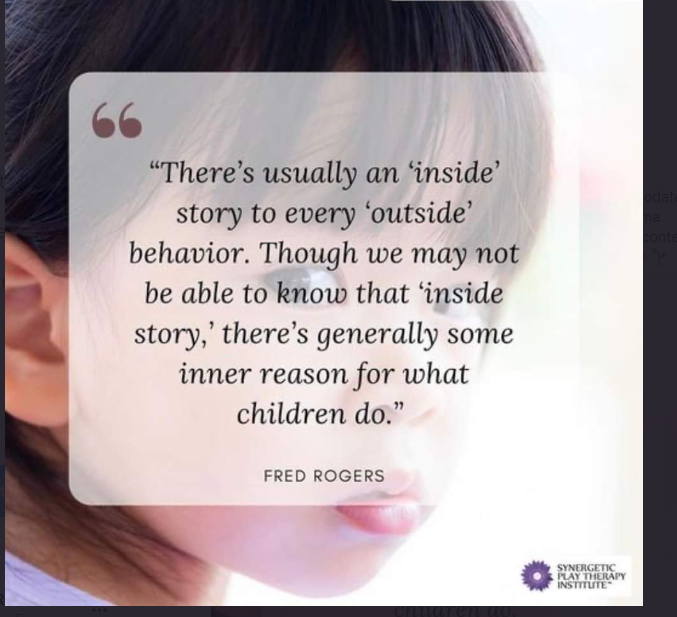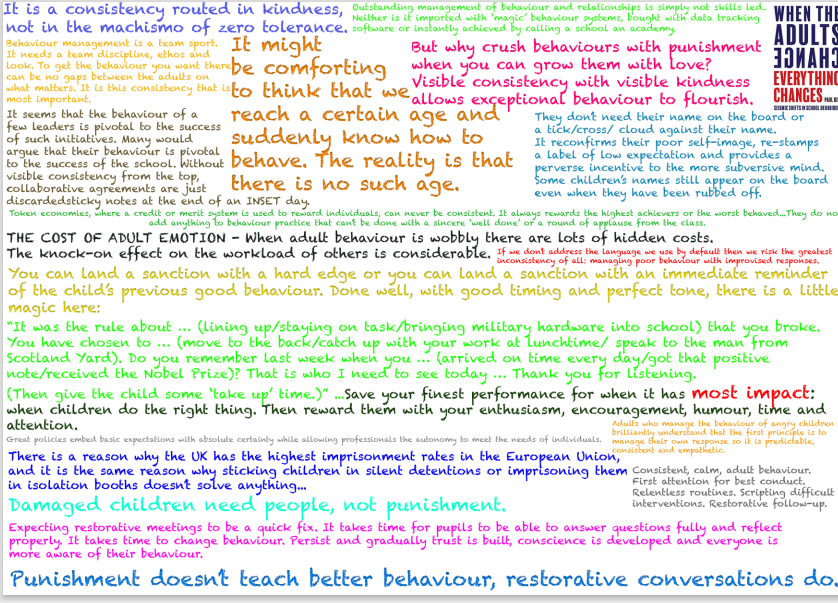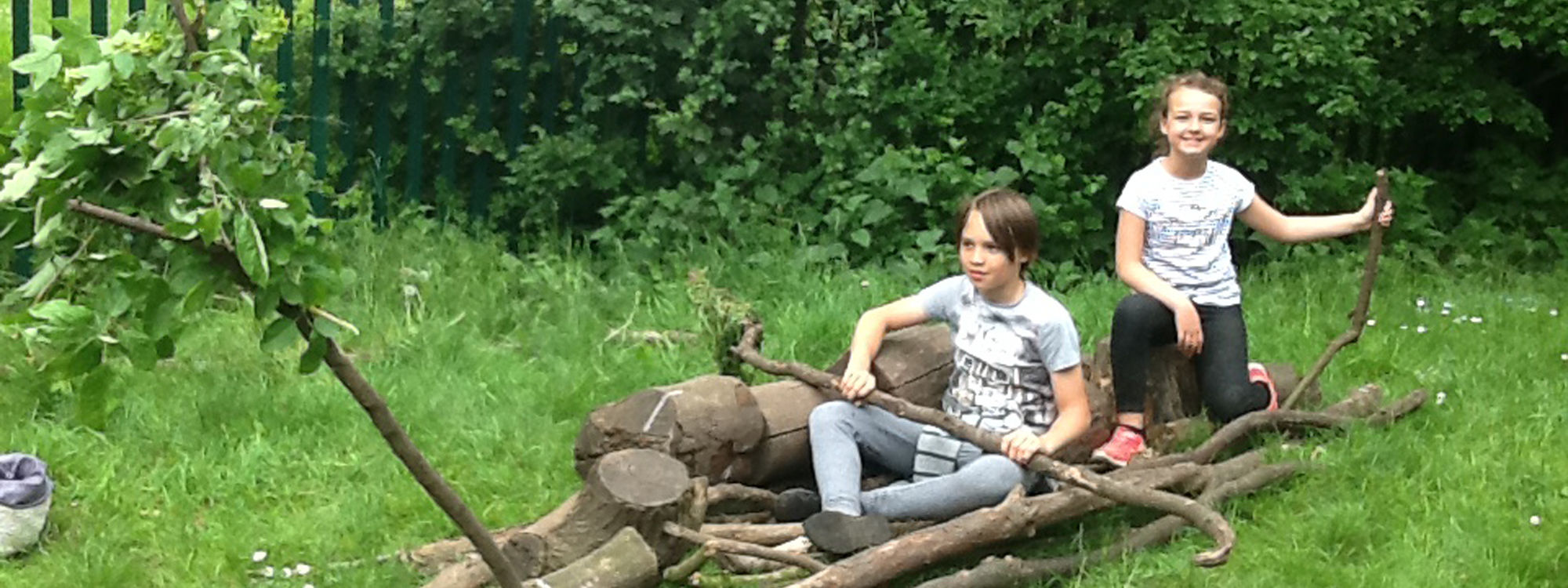- Home
- Continuing Professional Development
- 5 Minute CPD
5 Minute CPD
Our most troubled young peoples' behaviour needs to be accommodated through an ACEs lens. Having the tools to respond through a trauma responsive approach and how we talk to our young people in the context of relationships. This can only be done from a place of regulation.

Adverse Childhood Experiences, (ACEs) are stressful or traumatic experiences that can have a huge impact on children and young people throughout their lives.
This video will identify what consistutes ACEs and the impact they have on health and wellbeing.
'Picking up your own tab' from When The Adults Change, Everything Changes by Paul Dix
Quotes taken from "When the Adults change, everything changes" by Paul Dix.

5 minute CPD: Start these conversations early
- Children recognise race from a young age and they're never too young to start talking about it.
- Talk with pupils from the Early Years Foundation Stage (EYFS) onwards about the similarities and differences between people in a positive, open way. For example, discuss how characters in picture books are different and how they're the same (e.g. "these children have different skin colours, but they all laugh at the same things")
- Make sure you have a diverse representation of people in your books, images around your school (in displays, posters, murals) and the toys and dressing up clothes in your EYFS areas. Find out how to review and improve diversity in books.
- Talking about current events such as police brutality or the death of George Floyd is harder. But although these topics might not seem “age appropriate” for primary school pupils, children of all ages will have heard about these issues in the news and likely discussed them at home. If you don't talk about this at school, pupils are more likely to feel afraid or misunderstand what is happening.
5 minute CPD: A video and a book about racism
This book/video is a great tool to explain racism to younger pupils.
This book is helpful for older pupils: This Book Is Anti-Racist: 20 lessons on how to wake up, take action, and do the work by Tiffany Jewell.
Amazon book review:
Gain a deeper understanding of your anti-racist self as you progress through 20 chapters that spark introspection, reveal the origins of racism that we are still experiencing, and give you the courage and power to undo it. Each lesson builds on the previous one as you learn more about yourself and racial oppression. An activity at the end of every chapter gets you thinking and helps you grow with the knowledge. All you need is a pen and paper.
5 minute CPD: Don’t take a colour blind approach
It's easy to think that the best way to promote race equality is to pretend to pupils that you don't see race (e.g. saying "everyone is the same at our school, we don't think/talk about people's skin colour"), but race is an important part of people's history and identity, so don't ignore it.
Celebrate diversity
- Talk openly about the different ethnic groups in your school or class and celebrate the different identities or countries of origin within your school community – include staff and families within this too
- Create displays that show the different languages spoken in your school, and different places around the world that pupils or their families are from. Hold international days or events where pupils/parents/staff wear traditional dress or bring in traditional food or objects of cultural significance to share
Talk about the fact racism exists
- Don't just celebrate all the good things about diversity: be honest about the challenges. Talk to pupils from a young age about the fact that racism sadly exists and could even happen in your school. Make sure pupils know the processes you have in place to deal with racist incidents and what they should do if they think they've witnessed or experienced racism
- If you’re white, understand your own experiences and make it part of the conversation. Be open with pupils about the fact that as a white person there are things about racism you can never fully understand, because you haven't experienced it first-hand. Show Black, Asian and minority ethnic (BAME) pupils that you’re an ally by actively challenging and discussing different forms of racism
- If you feel comfortable, share your own experiences of racism, e.g. talk about the number of times you’ve been stopped by the police while driving, compared with white colleagues
- Show white pupils how they can be an ally by recognising and actively challenging racism, so they don’t feel like they’re the problem.
5 minute CPD: How to improve diversity in children’s books to support an anti-racist curriculum
Only 4% of children’s books published in 2018 had a BAME main character
Only 4% of British children’s books published in 2018 featured a main character from a BAME background. Improve representation and diversity in your school library and classrooms, so that they reflect the society we live in, and BAME pupils feel represented and valued.
Improving diversity in the books in your school isn’t enough on its own to create an anti-racist curriculum and school environment, but it’s a good place to start. This work should go alongside work on reviewing your curriculum to make it more inclusive. Be proactive in making sure the books at your school accurately reflect your school community, and modern Britain.
For all children, it’s important that the stories they encounter at school provide both 'mirrors' and 'windows':
- Mirror: a story that reflects your own culture and helps build your identity (e.g. a main character who looks like you)
- Window: a story that offers you a view into someone else’s experience (e.g. a main character who is different from you)
By providing books that do this, you're challenging the implicit racism of an all-white or majority-white library or book corner.
Books should challenge racism explicitly too. It’s important that alongside books that provide pupils with mirrors and windows, you also have books that address racism and racial justice explicitly.
5 minute CPD: Review the books you already have
The first step is to look at the fiction, non-fiction and picture books you already have in your school.
Staff carrying out the review should look at:
- Books in your school library (if you have one)
- Books in classrooms (e.g. in book corners or on bookshelves, books teachers are reading to the class for pleasure)
- Books studied on your curriculum, for all subjects (not just set texts for English)
- Books that serve other purposes: textbooks, reading books, phonics books
These books send a powerful, implicit message to all your pupils (and parents, if these books are going home) about who is valued at your school, and whose stories and histories matter.
Questions to ask and discuss when reviewing your books
Don't just look at if BAME people are represented, but how BAME people are represented. Don’t forget to think about BAME authors and illustrators too.
General questions
When reviewing your existing books, and when buying new books going forwards, ask:
- How many books have a main character who is clearly from a BAME background?
- How many books include characters who are clearly from a BAME background? Do BAME characters feature, but predominantly in the background or margins (e.g. only as a few black or brown faces in a white crowd)?
- Are BAME characters well-drawn, well-developed and well-rounded? Does the portrayal allow for cultural specificity (e.g. careful consideration of hair texture, facial features and skin tones in illustrations) without reducing characters to one-dimensional stereotypes?
- Are BAME characters predominantly defined by struggle, suffering or “otherness” (e.g. are there more books about slavery than books about BAME people’s achievements)?
- Are there books that deal explicitly with racism, as well as books that have BAME characters where race and racism are not explicit themes?
- How many books are by BAME authors and illustrators?
- How are BAME people represented across book types, genres and topics (e.g. is there diversity in picture books for younger readers, but not in novels or history books for older readers)?
- Is British BAME history represented, or is there a focus on American or global history and achievements?
- How many books take place outside of the UK? Are indigenous people represented in these books or ignored?
- Are the books featuring BAME people high-quality texts with engaging stories and illustrations? Do pupils enjoy them, choose to select them from the shelf or borrow them from the library?



